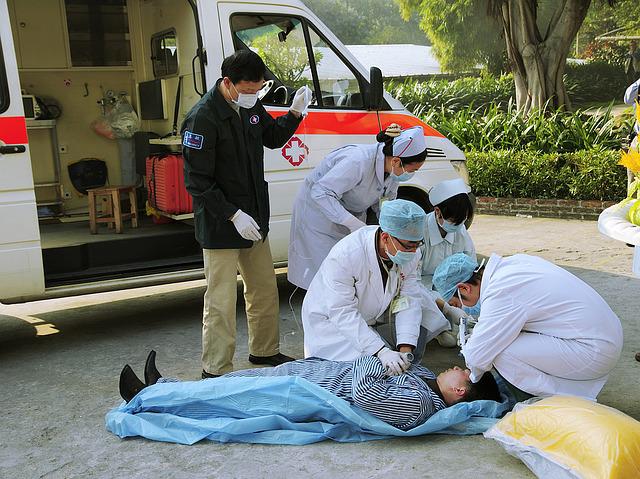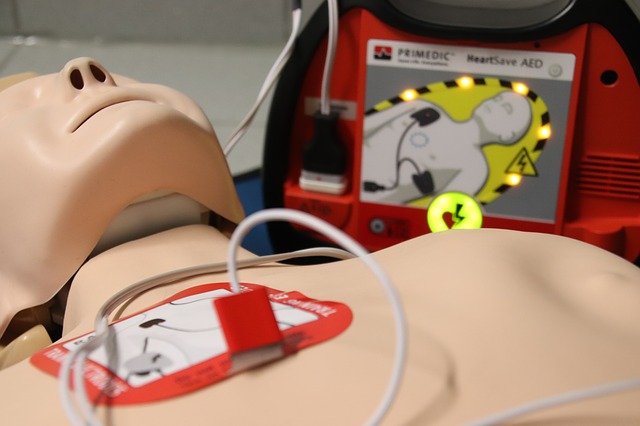
What Does RICE Stand For In First Aid? What You Need To Follow
First, what does rice stand for in first aid?
RICE is an acronym for rest, ice, compression, and elevation. The “R” stands for “rest” which is a key factor in helping the body repair itself. “I” in the acronym stands for “ice” which refers to applying an ice-pack to the injured joint. The “C” in RICE stands for “compression“. The “E” in RICE represents “elevate“.
You should keep the word RICE in mind, especially if you participate in a lot of sports. It’s both a word and an acronym. You can use this acronym to help you remember the basic soft tissue injury treatments of rest, ice, compression, and elevation. RICE isn’t thought of as a full or thorough medical procedure, but rather as a first aid technique. Just keep in mind RICE until you can get to the Cleveland Emergency Hospital for medical attention if you sustain a joint injury or sprain while playing sports, or at any other time.
Please continue reading as I provide more detailed information about what rice means in first aid.
Table of Contents
RICE Steps In First Aid
Rest
Your body uses pain as a warning sign. Stop your activity as soon as you feel pain, and for the first two days, try to get as much rest as you can. Avoid attempting to adhere to the “no pain, no gain” adage. It can exacerbate certain injuries, such as a moderate-to-severe ankle sprain, and prolong your recovery if you do this. For 24 to 48 hours after the injury, doctors advise against putting weight on the affected area. Resting also aids in reducing the risk of developing new bruises.
Ice
Ice has long been used to ease pain and swelling. During the first 24 to 48 hours following your injury, apply an ice pack (covered with a light, absorbent towel to help prevent frostbite) for 15-20 minutes every two to three hours. Don’t have an ice pack on hand? The perfect solution is a bag of frozen corn or peas.
Compression
Wrapping the injured area is necessary to stop swelling. Apply an elastic medical bandage (such as an ACE bandage) to the injured area. You want it to be snug but not too tight because if it is, blood flow will be obstructed. Remove the bandage if the skin beneath the wrap turns blue or becomes tingly, cold, or numb. Immediately seek medical attention if these symptoms don’t go away.
Elevation
This entails elevating the painful area of your body above the level of your heart. The throbbing, aching, and swelling are lessened by doing this. It’s not as difficult to do as you might imagine. For instance, while sitting on the couch with an ankle sprain, you can elevate your leg with pillows. Even when you’re not applying ice, the CDC advises keeping the injured area elevated whenever you can.

When To Seek Medical Treatment
R.I.C.E. can assist with a variety of common acute injuries., especially when combined with over-the-counter pain relievers. However, you should visit your doctor if your pain and swelling don’t start to decrease after 48 hours.
In case of any severe injuries, seek professional care right away. An obvious fracture, a dislocated joint, persistent swelling, or intense pain are all indications of a severe injury. Serious wounds could necessitate surgery or more intensive care.
Read about: How To Order Free Covid Test Kits?
FAQs About RICE
Which Is More Effective For A Sudden Sprain, Ice Or Heat?
Since it reduces pain and swelling and increases blood flow to the area, ice is typically advised for the first 48 hours or so after an injury. You can try using ice or no ice, depending on what seems to work for your recovery, but never use heat on a new acute injury, according to some researchers, who contend that the increased blood flow may enable the body to heal itself more quickly.4
How Is Compression Used To Treat Injuries?
Compression is the process of applying an elastic bandage to an injured body part in order to reduce swelling. It must be wrapped in a way that applies minimal pressure. If you experience tingling, numbness, increased pain, or swelling, stop wrapping it too tightly. Only the first 48 to 72 hours following an injury should necessitate the use of a compression wrap.
How Much Time Should I Take Off After Getting Hurt?
At least two to three days of rest are typically advised, though this depends on the severity of the injury and other variables. You might not want to keep the injured area completely immobile, though. Talk to your healthcare provider about whether you should do some light exercises or movements to prevent stiffening and pain.6
Conclusion
The article concentrated on what rice means in first aid.
Chances are good that your doctor prescribed RICE as one of your initial treatments if you’ve ever sprained your ankle or experienced another type of sprain or strain. RICE is an acronym for rest, ice, compression, and elevation, and it’s a straightforward self-care technique that promotes quick healing.
And once more, thanks for reading.

